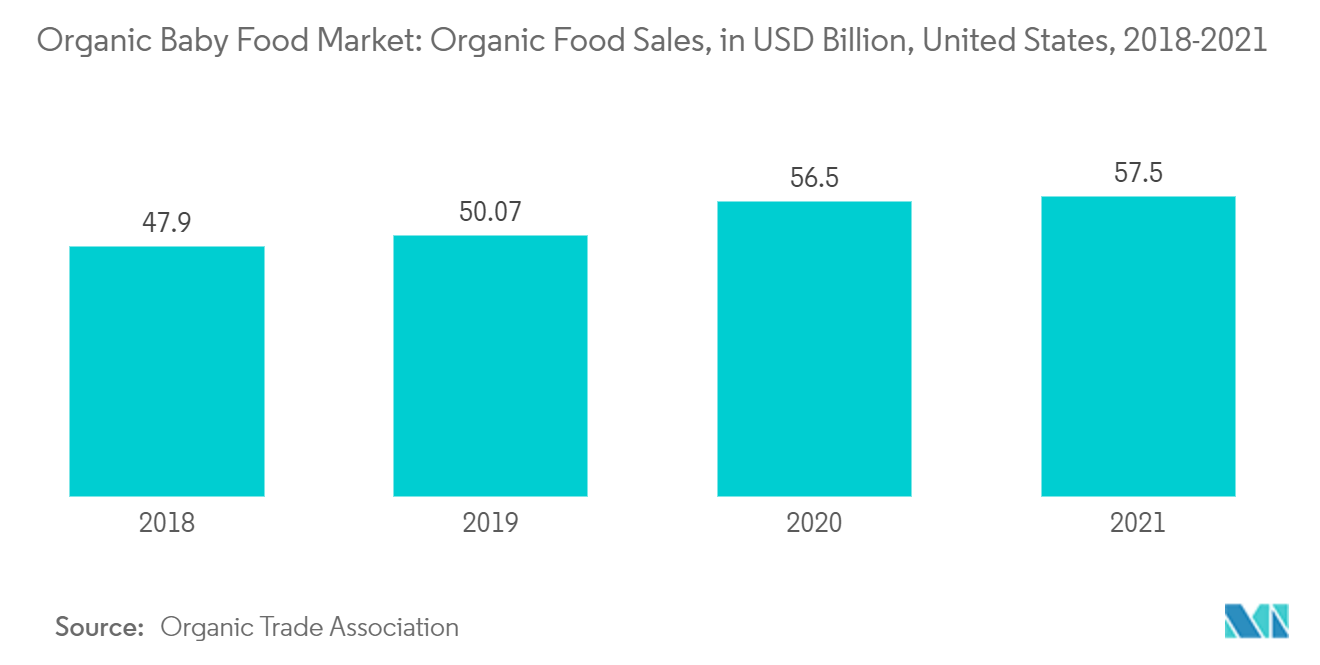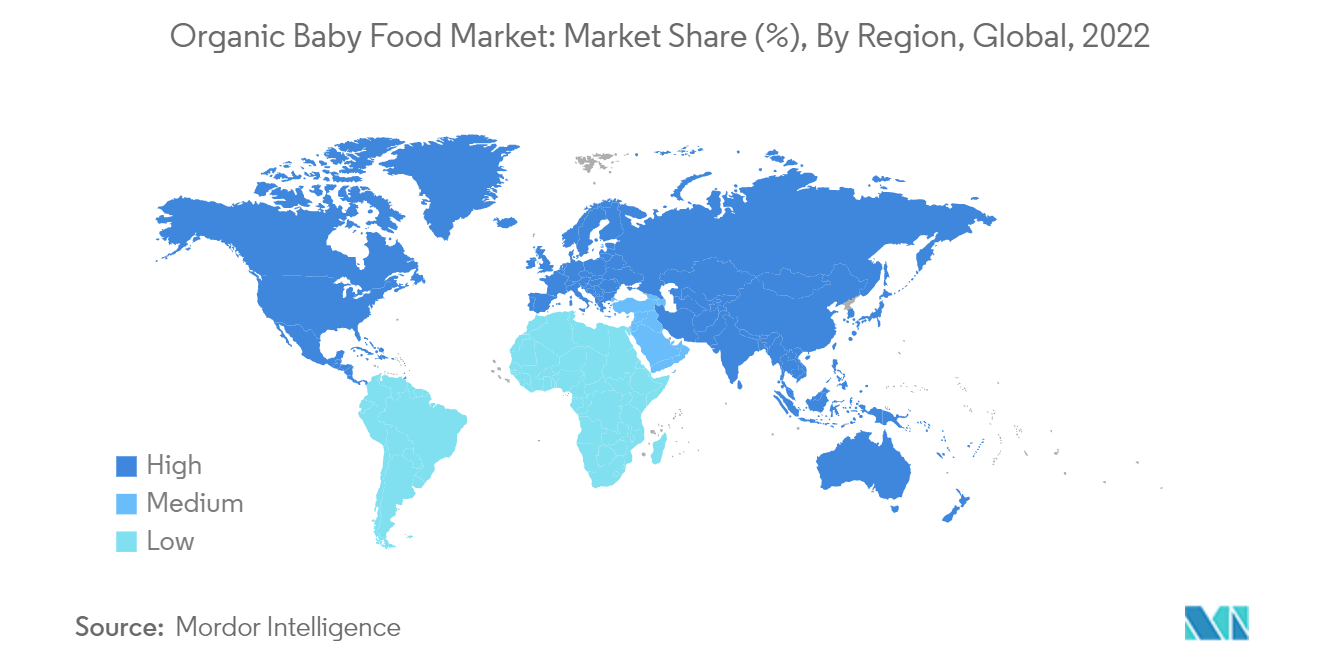Market Trends of Organic Baby Food Industry
Escalating Strategic Investments in Organic Baby Food
The popularity of organic baby food is growing, with dedicated aisles for the category. With the increased disposable income, parents can compensate for homemade food with branded organic baby food, posing a great driving factor in both developed and developing countries during the forecast period. Thus, there are increasing investments in the organic baby food sector. For instance, in 2021, Neptune Wellness Solutions acquired a 50.1% share in Sprout Foods plant-based baby food company. The deal included a USD 6 million cash payment and the issuance of approximately 6.7 million in Neptune common shares, valued at USD 12 million. The company registered annual net revenues of USD 28 million.
Baby food start-ups are now differentiating their brands based on specific health goals, from better digestion to brain development, baby-led weaning, and allergy prevention. For example, NurturMe, a portfolio company of Advantage Capital, was acquired by Grays Peak Capital. NurturMe provides baby food and children's snacks that emphasize healthy digestion.
As a result of rising investments in developing and promoting organic food and beverages (including infant food), sales have witnessed a rise in demand over the past few years. As per data published by the Organic Trade Association, in 2021, the United States sold roughly USD 57.5 billion worth of organic food. Nevertheless, companies are investing in R&D to produce products by the standards, which are anticipated to enhance the growth of the organic baby food market during the forecast period.

Asia-Pacific Holds the Largest Share
The relaxation of China's one-child policy may also positively impact pre-packaged baby foods. The potential of increasing wealth and the rising number of newborns give China's baby food and drink manufacturers adequate stimulus to develop packaged organic food products to cater to the consumer demand for better quality organic baby food and drink. Other Asian countries like India and Australia are anticipated to exhibit strong growth in demand for organic infant food products. Thus, many start-ups have come forward to take advantage of the lucrative opportunities offered by the market. In February 2023, Timios, an Indian start-up with headquarters in Bengaluru that sells packaged nutritious snacks for kids, entered the baby food industry by introducing its new made-to-order organic porridge variety for infants and toddlers. The new line, which came in 12 variations, was created with the nutritional needs of infants between the ages of 6 and 8 months in mind.
As per the Global Organic Trade, the market for organic packaged food and beverage in Japan was worth around USD 597.4 million, with a per capita income of USD 4.71. This market size and the increasing prevalence of pre-cooked foods for babies also impacted the market for organic baby food.


